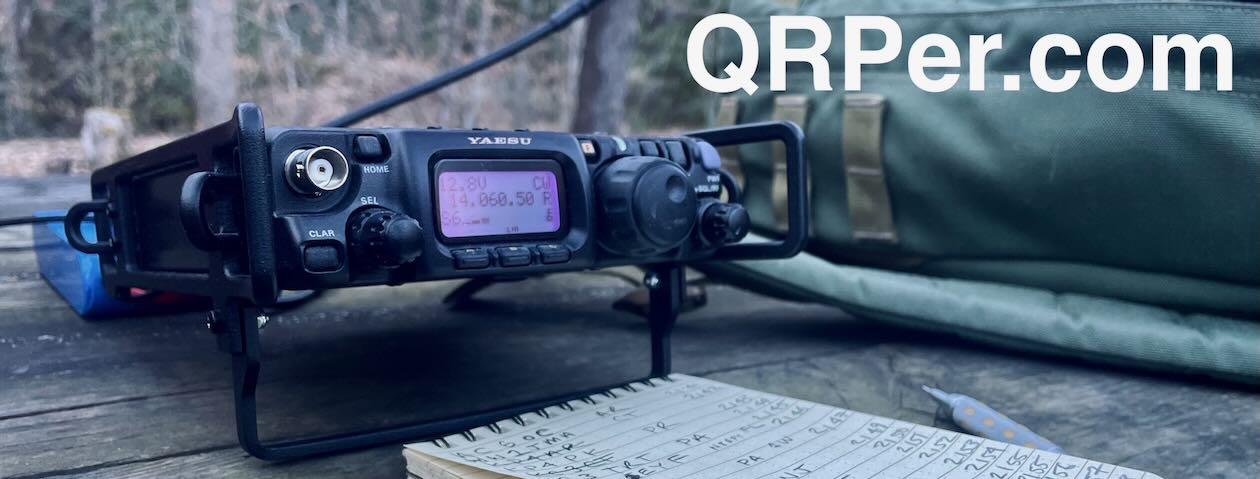 On Friday, February 9, 2024, I had an opportunity to do an extended Late-Shift POTA activation in Pisgah National Forest. I couldn’t pass that up!
On Friday, February 9, 2024, I had an opportunity to do an extended Late-Shift POTA activation in Pisgah National Forest. I couldn’t pass that up!
Once again, one of my daughters had a casting call and a Shakespeare performance that opened up an activation window from about 17:00 – 20:00 local (22:00 UTC – 01:00 UTC).
If you’ve followed my POTA activities for a while, you’ll note that multi-hour activation windows are very much a rarity. More often than not, I’m squeezing activations into 30-60 minute windows of time as I go about my work and family duties.
Pisgah National Forest and Game Lands
 The closest POTA site, once again, was Pisgah National Forest (K-4510) and Pisgah Game Lands (K-6937). There are so many sites to choose from within Pisgah; it’s always a difficult decision in terms of picking a location.
The closest POTA site, once again, was Pisgah National Forest (K-4510) and Pisgah Game Lands (K-6937). There are so many sites to choose from within Pisgah; it’s always a difficult decision in terms of picking a location.
In this case, I decided to stay a little closer to mobile phone service just in case my family needed to reach me during that time. I chose the Sycamore Flats picnic area and was happy to see that the picnic shelter was available.
I thought it might be fun to set up two antennas since I had so much time. For the first part of the activation, on 20 meters, I would deploy the Chameleon MPAS Lite vertical.
For the second part (the following UTC day), I would deploy my MM0OPX 40-meter end-fed half-wave as I knew 40 meters would be much more active after sunset.
EFHW Deployment
 Since sunset was approaching, I deployed my MM0OPX EFHW first because it’s much easier to deploy a wire antenna in a tree when it’s still light outside.
Since sunset was approaching, I deployed my MM0OPX EFHW first because it’s much easier to deploy a wire antenna in a tree when it’s still light outside.
Side note: I mention in the activation video that a good headlamp (like my Fenix) makes working in the dark quite easy. I’ve deployed wire antennas after sunset with headlamps before–it’s quite doable–but I still prefer using a throw line when there’s still sunlight. It’s just easier (for me, at least) to judge distance.
I deployed the EFHW in a tree and in the brush between two pathways. While it would have been easier to deploy it on a path, I always try to deploy my wire antennas in a way that hikers and other park guests wouldn’t easily walk into them–especially at dusk when even high-visibility line colors are difficult to see.
Chameleon Carbon Fiber Tripod
 The second antenna deployment was my Chameleon MPAS Lite vertical, and this activation gave me an excuse to test the new Chameleon carbon fiber portable tripod.
The second antenna deployment was my Chameleon MPAS Lite vertical, and this activation gave me an excuse to test the new Chameleon carbon fiber portable tripod.
In January, Chameleon sent me a box with a few of their smaller accessories/promotional items. I plan to give away everything, save the tripod, in an upcoming QRPer giveaway.
I’ve been eager to test the tripod because it’s lighter and easier to transport (in my SOTA pack) than the stainless spike that comes with the MPAS Lite antenna system. This tripod will also come in handy when operating at parks that don’t allow stakes in the ground. Continue reading POTA by Lantern Light: One Activation in Two Days with Two Antennas!

































